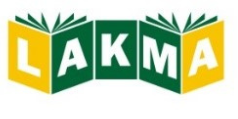
BIODATA
Phil BALL works for the Federation of Basque Schools, based in San Sebastián, Spain. He has been closely involved with their successful plurilingual project, ‘Eleanitz’, and has been involved in several European projects. He has written a wide variety of CLIL textbooks for the Basque Schools’ social science syllabus (studied in English), and co-wrote and performed the music for the award-winning primary project, ‘Story Projects’. He also teaches methodology to university lecturers who wish to teach through English.
His book about his early teaching experiences in an English state school was published in England by Random House (‘The Hapless Teacher’s Handbook’) and he is currently working on CLIL-based language materials for a a new competence-based curriculum in the Basque Country. He is the co-author of the new book about CLIL, ‘Putting CLIL into Practice’ (Oxford University Press 2015).
PLENARY CLIL in Three Dimensions
The acronym CLIL seems to have lasted due to its self-explanatory nature. Those wishing to adopt its set of practices see immediate advantages in its allegedly dual nature – simultaneous ‘content’ and ‘language’ learning. Perhaps a better way of looking at the advantages that CLIL can now confer is to see the approach in terms of supporting language awareness in content classes and supporting content awareness in language classes. If that sounds reasonable, then it only remains to clear up the ambiguity surrounding the word ‘content’.
This talk will illustrate the notion of the three dimensions of content in CLIL, namely conceptual, procedural and linguistic. The notion forms the leitmotif of a new book on CLIL (Ball, Clegg, Kelly: ‘Putting CLIL into Practice’ OUP, 2015), where both subject and language teachers are encouraged to think of their lessons in these 3-dimensional terms, and to adjust the volume or weight of the individual task dimensions according to the priorities that specific objectives confer at any given time in a lesson or in a longer didactic unit.
WORKSHOP Designing Successful CLIL Materials
Good educational materials are the best teacher-trainers, because they illustrate the central principles involved in any paradigm, and they are always to hand – there on the shelf, ready to be used or consulted. This practical workshop will try to illustrate various key components of CLIL-based methodology by using ‘3D CLIL’ as its framework, within the context of materials design. The participants will be able to analyse and discuss a variety of successful working examples, and try their hand at some design themselves.
